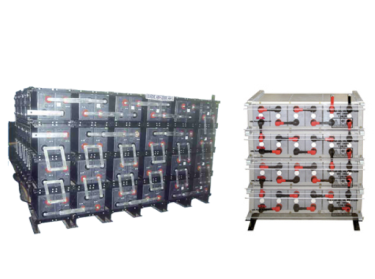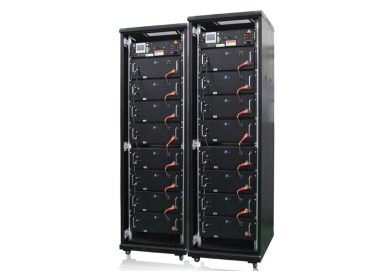VRLA BATTERIES
This valve regulated lead-acid battery range has a design life of 20 years
at 27°C under ideal float condition. The capacity of these batteries ranges from 200Ah to
6000 Ah at 27°C down to 1.75 VPC. The operating temperature range is -5°C to 40°C.

-
These batteries give 1800 cycles at 50% DOD.
-
Excellent recovery from deep discharge.
-
Antimony free alloy is used and hence self-discharge is less than 0.5% per week of C10
capacity
at 27°C.
-
Factory charged and ready to use, hence no delay between receipt and use resulting in
instant
power source.
-
NEPST Range: Capacity Range 200Ah to 400 Ah @ 27°C down to 1.75 VPC - NMST Range:
Capacity Range
600 Ah to 6000 Ah @ 27°C down to 1.75 VPC.
-
No water topping up required ever resulting in saving of hundreds of liters of distilled
water
and manpower required for topping up throughout life of battery.
-
The gas recombination technology cycle effectively nullifies generation of gas during
normal use
resulting in no emission of corrosive fumes under normal operative conditions and hence
no
elaborate air exhaust system is required.
-
Specifications conforming to GR No. TEC/GR/TX/BAT-001/04.JUN 2011. JIS: C 8704-2:1999
IEC: 60896
- 21 & 22 ANSI: T1 330(US specification for Telecom battery) RDSO: IRS S93-96 with
latest
amendment.

LITHIUM ION BATTERY PACK
-
Lithium-ion (Li-ion) batteries are inarguably the most popular type of rechargeable
battery for the UPS systems.
-
Li-ion batteries are safer than many other types of batteries Electrodes commonly used
in lithium-ion batteries, lithium and carbon, are lightweight on their own, making for
much smaller and lighter batteries than lead-acid batteries.
-
Lithium is a highly reactive element with the ability to release and store large amounts
of energy, allowing li-ion batteries to pack a high energy capacity in a small size.
-
Lithium-ion batteries don’t suffer from the memory effect, which means they always give
up their last bit of power, and you can recharge them whether you’ve used 100% or 25% of
their capacity
-
Standard quality LiFePo4 batteries can deliver at least 2000 charge/discharge cycles at
80% DoD and 1C discharge rate, and the remaining capacity remains above 80%.
-
Lithium-ion batteries can be “fast” charged to 100% of capacity. Unlike with lead acid,
there is no need for an absorption phase to get the final 20% stored. And, if your
charger is powerful enough, lithium batteries can also be charged insanely fast. If you
can provide enough charging amps – you can actually fully charge a lithium ion battery
just 30 minutes.
-
Lithium-Ion batteries are fairly maintenance free. A “balancing” process to make sure
all the cells in a battery bank are equally charged is automatically achieved by the BMS
(Battery Management System). Just charge you battery and you are good to go.






















